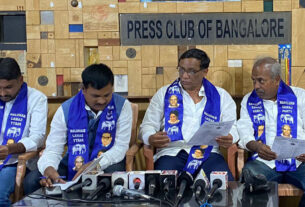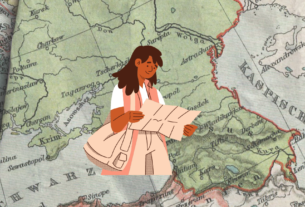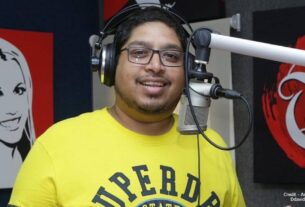Filmmaker and writer to document the bi-metal sculpting process which metal sculptors lost during the 20th century.
Indira Gandhi National Centre for the Arts (IGNCA) has appointed a photographer, videographer, and writer to document the process involved in bi-metal sculpting. The process involved in bi-metal sculpting was lost in the 20th century, say experts.
Kavitha. D. K., Principal research scholar and the organizer of the bi-metal sculpture workshop said, “Documenting the process is very important for future purposes. We want to put the sculpting process online and in books for young sculptors and school students. This documentary and book will promote bi-metal sculpting process and later can be used by many sculptors.” ]
She said that the documentation will show the dimensions of sculptures, the process of sculpting done by shilpis and the tools and materials used in it.
Gandugali Utsavamba from Chitradurga, Karnataka has been appointed as the writer to document the process of bi-metal sculpting in words. She said, “The shilpis (sculptors) are Hoysala sculptors. I will be documenting the process, tools involved in sculpting, the dimensions, and expression which the shilpis will give to the sculpture. I will pen down the life of the shilpis during the three months of the workshop.”
Valasakumar, Reprography Officer, IGNCA (Bengaluru regional office), said, “This is a trial process. Bi-metal sculpting is done with two metals. The body of the sculpture is made with bronze and the jewellery and clothes are made with brass. We know the outcome but we have to try various methods to get the accurate process of making a final sculpture. To get the perfect sculpture we need to know the process so we have to document it in form of a movie and write a book about it.”
Mahendra D., Regional Director, IGNCA, said, “We are introducing the bi-metal sculpting because the process of making it was left behind in the 20th century. The Ministry of Culture has taken the responsibility to document this project this time. We want to keep the documentary and the book for future research purposes and as study material for students. We want to protect, preserve and promote the practice of sculpture making.”
He said that without knowing the exact process of sculpting, one cannot succeed in making a sculpture and may suffer huge losses because it involves a lot of money.
Dr. Achal Pandya, Head of Department (Conservation), IGNCA, New Delhi, said, “Documentation is important so that we can showcase our traditional workworldwide and promote this Indian form of sculpting on an international stage.”
Kavita said, “My grandfather N. P. Srinavasacharya from Mandya district worked with the art of bi-metal sculpting. His sculpting process was never documented. Many other shilpis triedbi-metal sculpting but never succeeded. They always face some other issues. Temperature and temperament of the metals and weather of the surroundings were tough to understand which lead to multiple failures in making a bi-metal sculpture.”
Dhanush Kiran, commercial sculptor, Sculpture Studio Bangalore, said, “Sculpting is an expensive process and requires investment in making a sculpture as well as in learning to master it. Putting the process involved in making a sculpture makes it easier for the students to learn it at home. But practicing it in a studio is a must. There are very few online videos by Indians where one can see and learn the traditional form of sculpting. Documentaries are inspiring and helpful to learn new forms of sculpting. Books may give us a brief knowledge about the tools used.”
IGNCA organized the inauguration of the Bi-metal sculpture workshop and documentation on 28 November 2022 at 10 a.m. in its regional office. The event was inaugurated by Dr. Gnanananda, Dean, Sampradayika Shilpagurukulagala Kendra, Bengaluru. Dr. Achal Pandya, a sculptor and Arun Yogiraj,who is an artist participated. . The event had 20-30 visitors which included visual artists, painters, and sculptors. The workshop will continue for three months and four shilpis are selected to make two bi-metal sculpture. The selected shilpis were from Mandya, Udupi and Bengaluru.
Glimpse of the Bi-metal sculpture workshop and documentation event.










